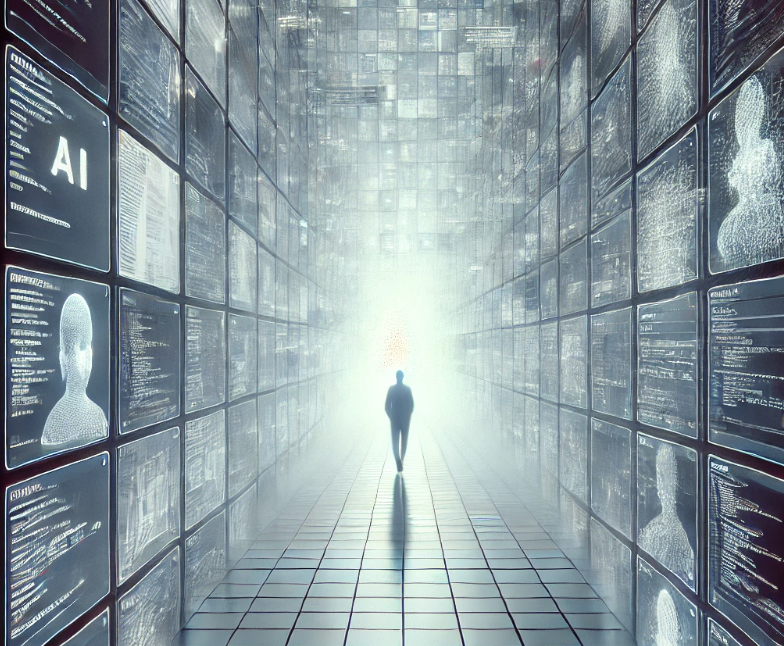
Dead Internet Theory
There’s a weird thing called Dead Internet Theory: Ever heard of it?
Dead Internet Theory suggests that most of the content on the internet is now machine-generated or automated by artificial means, such as generative AI or bots.
Due to the rise of machine-generated content and bots, believers in the theory suggest the internet officially ‘died’ around 2016. Acolytes of this theory posit that it was intentionally designed to minimize organic human activity and manipulate users into certain belief and consumption patterns. Some even believe this is used by government agencies to influence voters and public perception.
Conspiracy? Absolutely. But it is not as unhinged as we might imagine.
As of April this year, 49.6% of all internet traffic is bots. It begs the question: at what percentage of bots do we declare the internet ‘dead’? But before you answer that, here’s another looming reality: researchers are currently claiming that 90% of content on the internet will be AI-generated by the end of 2026. If this occurs—and it probably will—then the internet will no longer be a digital representation of humanity. It will become a digital representation of a digital representation… it will no longer be ‘us.’ And if it isn’t us, it would be fair to claim the internet is dead.
Dead Internet 2.0
If the internet becomes mostly populated by generative AI, resolution will be lost, and nuance and insight will evaporate. Humanity will be replaced by proxies of humanity. Each iteration will be more processed than the last because AI itself learns from human-based content. As more and more content becomes machine-generated proxies of what was once human, we’ll end up with machine interpretations of machine interpretations.
This matters because the most valuable aspects of content, commerce, and society are the nuggets and discoveries of previously unthought-of ideas. While generative AI might help uncover new ideas, it can’t do it on its own. It needs a human database of real, wide, and weird experiences from different cultures and geographies. Without this, it will become like the memes we’re already exposed to: remakes and reposts of things we’ve seen dozens of times—the Instagram post with a floating TikTok logo in the corner, with people reporting posts we all saw last week.
Here’s where we need to put on our retro brains: It’ll be like a tape recording of a tape recording of a tape recording. While not the same song in this instance, rather rehashed ideas with varying degrees of resolution from the original. Nothing new.
The Human Layer
The human layer matters more than we know and will become even more important. The best way to use AI is as a leaping point, to jump off from and come up with original prompts which draw from the physical world. This means we need to add to the AI database by uploading inputs and ingredients for it to work with. We need to resist the temptation of asking it to do things on its own with what it already knows. Likewise, we can use it to build on our new and original ideas. We need this for our sake, our audience’s sake, and for the internet itself. If we don’t, the ecosystem known as the internet will enter a perpetual decline, with a single invasive species—AI-generated content.
Why This Matters
In developed markets, people spend an average of 6.35 hours a day on the internet. It is a crucially important part of the human experience. As I write this, the internet is in danger because people simply can’t compete with the scale of bots, and soon AI.
To keep up, we humans have developed a taste for quicker, easier, and more processed content. We now play by the rules of speed and the all-knowing algorithms that determine what we see. Sadly, we do whatever works to get views… and in the process, we help kill the ecosystem we rely on. Big tech firms have fostered this behavior by creating a battle for attention that could kill the very thing we use to seek that attention.
Don’t Kill the Goose
At its best, the internet has always been about meaningful connection—between people, ideas, and creativity. As AI-generated content increasingly fills the digital space, we risk diluting its quality and eroding what makes it valuable. To preserve this, we need to prioritize authentic human experiences and champion original thought, using AI as a tool for augmentation, not a lazy replacement. Those who do will eventually benefit.
If we don’t, ‘Dead Internet’ won’t be a theory but an inevitability. We might end up with the digital equivalent of Babylon—once a symbol of immense wealth, grandeur, and learning, eventually abandoned by those who found value in its organic, human-driven interactions, leaving behind only the empty shell of its former self—a digital space in ruins, populated by recycled and soulless content.
We must do better.
Keep Thinking,
Steve.